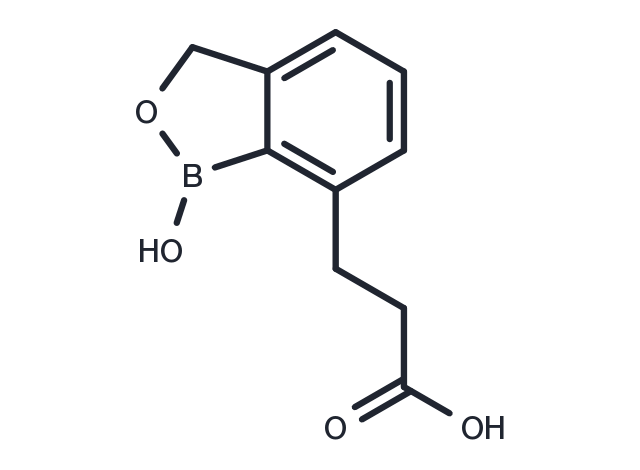Powder: -20°C for 3 years | In solvent: -80°C for 1 year


AN3661, a potent antimalarial lead compound, targets a Plasmodium falciparum cleavage and polyadenylation specificity factor homologue subunit 3 (PfCPSF3). AN3661 inhibits Plasmodium falciparum laboratory-adapted strains, Ugandan field isolates, and murine P. berghei and P. falciparum infections[1].

| Description | AN3661, a potent antimalarial lead compound, targets a Plasmodium falciparum cleavage and polyadenylation specificity factor homologue subunit 3 (PfCPSF3). AN3661 inhibits Plasmodium falciparum laboratory-adapted strains, Ugandan field isolates, and murine P. berghei and P. falciparum infections[1]. |
| In vitro | AN3661 is active at nanomolar (IC50=20-56 nM) concentrations against P. falciparum laboratory strains known to be sensitive (3D7) or resistant (W2, Dd2, K1, HB3, FCR3 and TM90C2B), and AN3661 is similarly active in ex vivo studies of fresh Ugandan field isolates (mean ex vivo IC50=64 nM). AN3661 shows minimal cytotoxicity against mammalian cell lines, with the CC50 60.5 μM against Jurkat cells, and all other CC50 values greater than the highest concentrations tested (25 μM or above)[1].AN3661 inhibits the stability of P. falciparum transcripts[1]. |
| In vivo | AN3661 (50-200 mg.kg; p.o.; daily for 4 days) inhibits murine P. berghei infections with ED90 (4 days) 0.34 mg/kg[1].AN3661 is administered orally for 4 days, beginning on the third day of infection, the ED90 4 days after initiation of treatment is 0.57 mg/kg[1]. Animal Model: P. berghei-infected mice (malaria model)[1] |
| Molecular Weight | 206 |
| Formula | C10H11BO4 |
| CAS No. | 1268335-33-6 |
Powder: -20°C for 3 years | In solvent: -80°C for 1 year
DMSO: 250 mg/mL (1213.59 mM)
You can also refer to dose conversion for different animals. More
bottom
Please see Inhibitor Handling Instructions for more frequently ask questions. Topics include: how to prepare stock solutions, how to store products, and cautions on cell-based assays & animal experiments, etc.
AN3661 1268335-33-6 AN 3661 AN-3661 inhibitor inhibit
